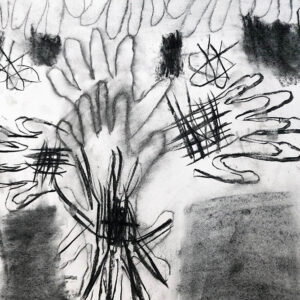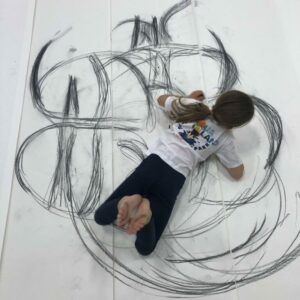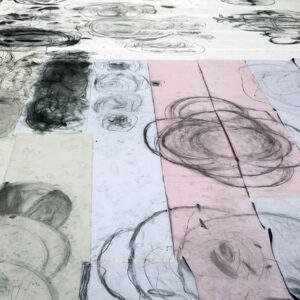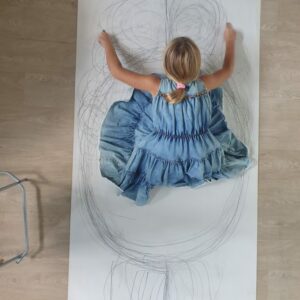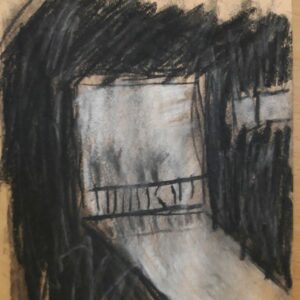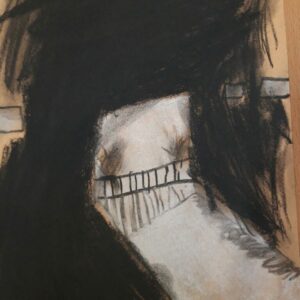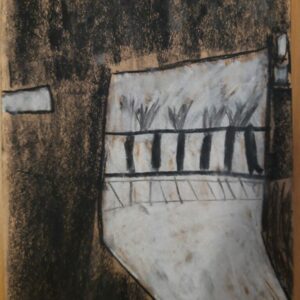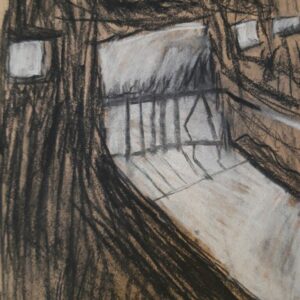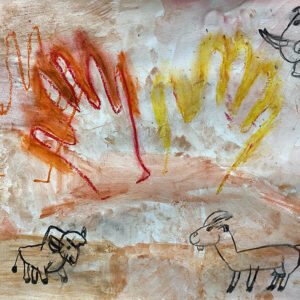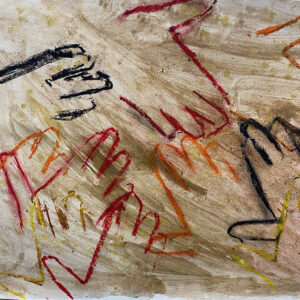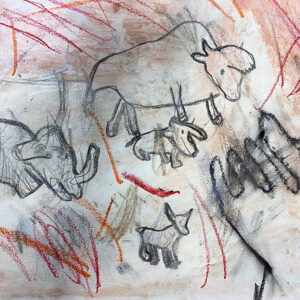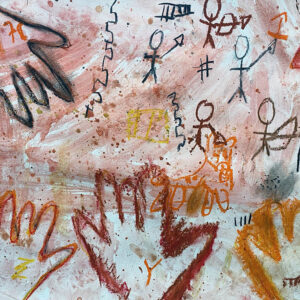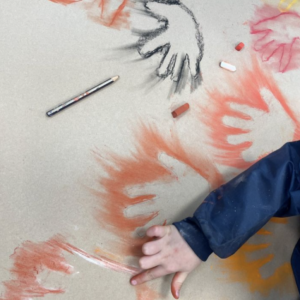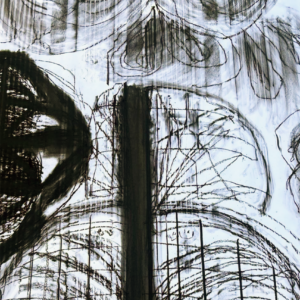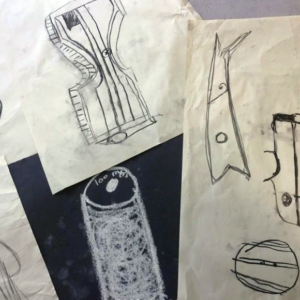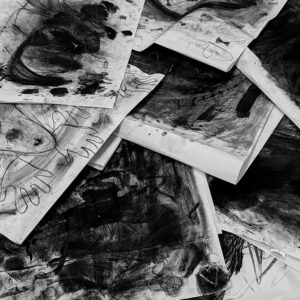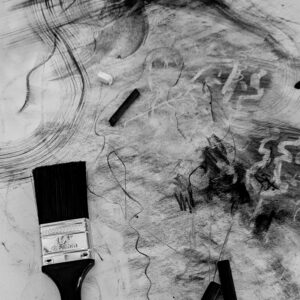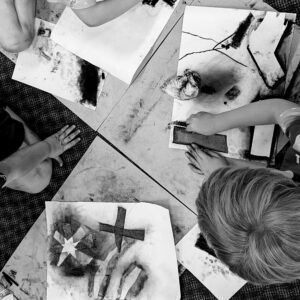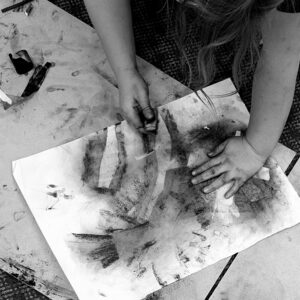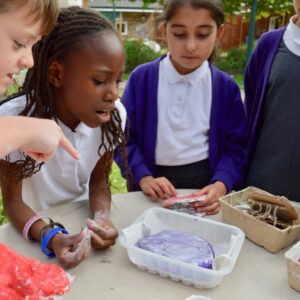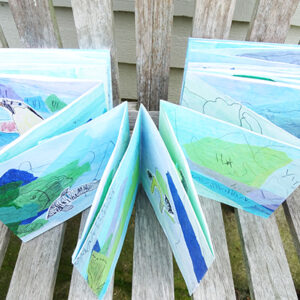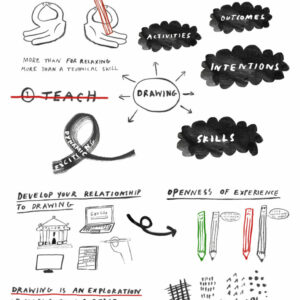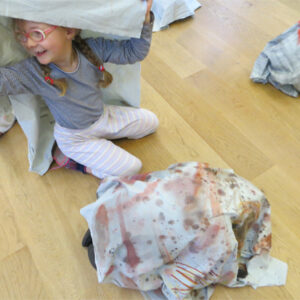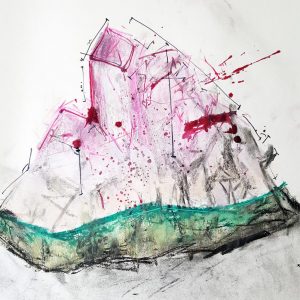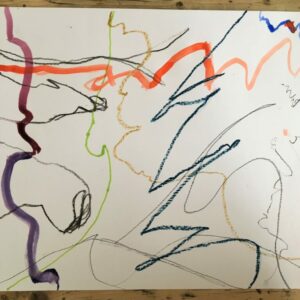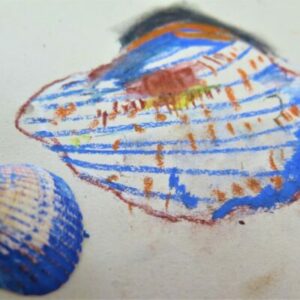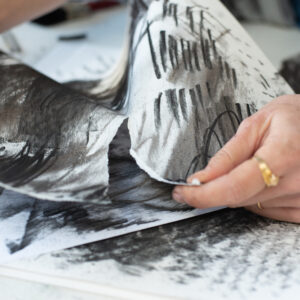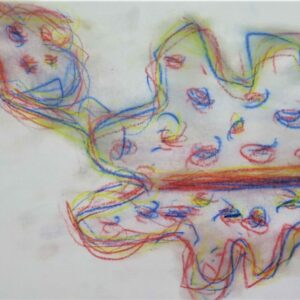Pathway for Years 3 & 4
Disciplines: Drawing, Sketchbooks
Key Concepts:
-
That when we draw we can use gestural marks to make work.
-
That when we draw we can use the expressive marks we make to create a sense of drama.
-
That when we draw we can move around.
-
That when we draw we can use light to make our subject matter more dramatic, and we can use the qualities of the material (charcoal) to capture the drama.
In this pathway, children discover how to make drawings that capture a sense of drama or performance using charcoal.
Children are freed from the constraints of creating representational drawings based on observation – instead they use the qualities of the medium to work in dynamic ways. Linking drawing to the whole body helps children see drawing as a physical activity, whilst a sense of narrative feeds the imagination.
This pathway will take approximately half a term, based upon a weekly art lesson.
Theme:
Cave art, Movement, Human Body, Relationship of Body to Place
Medium:
Charcoal, Paper, Body
Artists:
Heather Hansen, Laura McKendry, Edgar Degas
If you use this resource in your setting, please tag us on social media: #InspiredBy @accessart (facebook, twitter) @accessart.org.uk (instagram) and share the url. Thank you!
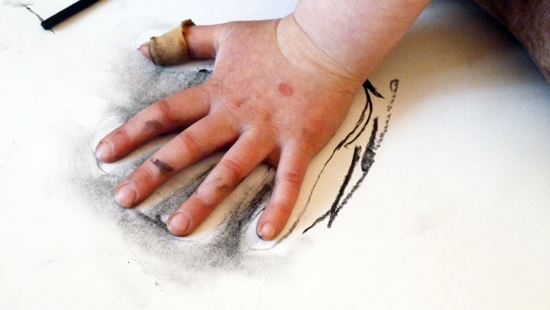
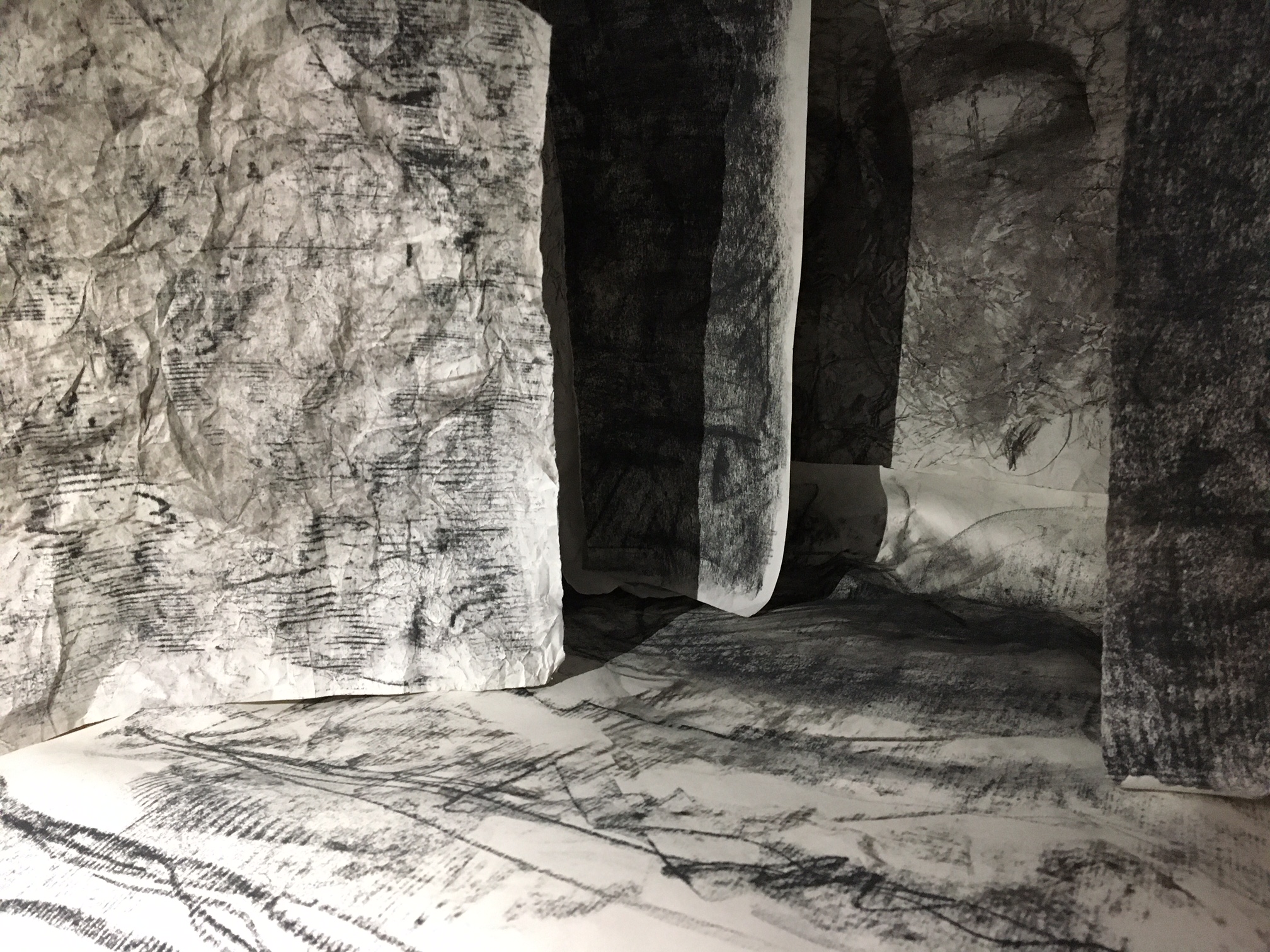

Teaching Notes
Find the MTP for this pathway here.
Find the Zoom CPD session introducing this pathway here.
Find a Zoom CPD exploring the properties of Charcoal here.
Before you begin, explore some simple tips for improving outcomes from this pathway here.
Curriculum Links
Music & Drama: Listen to music to influence marks and movement while children do the “Dancing with Charcoal”.
I Can…
-
I have seen how artists use charcoal in their work. I have been able to talk about the marks produced, and how I feel about their work.
-
I have experimented with the types of marks I can make with charcoal, using my hands as well as the charcoal.
-
I can work on larger sheets of paper, and I can make loose, gestural sketches using my body.
-
I can understand what Chiaroscuro is and how I can use it in my work.
-
I can use light and dark tonal values in my work, to create a sense of drama.
-
I have used my body as a drawing tool to make drawings inspired by movement, and seen how other artists do the same.
-
I have taken photographs of my work, thinking about focus, lighting, and composition.
-
I have shared my work with my classmates and talked about what I felt was successful and what I might like to try again. I can voice what I like about my classmates work and how it makes me feel.
Time
This pathway takes 6 weeks, with an hour per week. Shorten or lengthen the suggested pathway according to time and experience. Follow the stages in green for a shorter pathway or less complex journey.
Watch Artist Lancelot Richardson to find out about the different types of charcoal and how you can use them in the “Introduction to Charcoal” resource.
Use hairspray as a “fixative” for the chalk drawings. Spray outside or in a well ventilated room.
Materials
A2 sugar paper, A4 paper for ‘pallets’, willow charcoal, erasers, hairspray (for fixing), white chalk.
Project 1: Drawing by torchlight – Torches, small toys/objects, charcoal, white chalk, buff sugar paper.
Project 2: Small cardboard boxes, charcoal, A2 sugar paper, scrap card/modelling materials, small toys/objects, tape, drawing materials as above.
Project 3: Charcoal Cave – Medium/large cardboard box, newsprint, charcoal (ideally both willow and compressed) rags, small toys or dollhouse furniture.
Project 1: Charcoal and Dance – A2 or A1 paper/wall paper, charcoal.
Pathway: Gestural Drawing with Charcoal
A PDF of this pathway can be found here.
-
Aims of the Pathway
This pathway aims to introduce children to the idea of making gestural drawing, exploring charcoal as a medium. How can we use our bodies to inform how we make marks?
- Week 1: Explore Charcoal
Introduction to Charcoal
The pathway begins with an an introduction to charcoal as a drawing medium.
- Introduce an Artist
Introduction to Laura McKendry

Introduce children to the work of Laura McKendry who uses charcoal to make large gestural drawings of dogs, using the free to access “Talking Points: Laura McKendry” resource. Use the questions on the resource to help guide a class conversation.
- Introduce an Artist
Introduction to Edgar Degas

Contrast the work of Laura (above) with the charcoal drawings of Degas using the free to access “Talking Points: Charcoal Drawings by Edgar Degas” resource.
Use the questions on the resource to help guide conversation.
- Week 2: Explore Charcoal
Exploring Charcoal
For Weeks 2 and 3, invite children to draw on large sheets of sugar paper and fix the work using fixative or hairspray.

Next, children will begin to explore charcoal for themselves. Use the “Discovering Charcoal Warm-Up Exercise” resource to support their exploration.
Think about how they can experiment with mark making to create line, shape and tone. Explore the “Talking Points: What is Chiaroscuro” resource to get pupils to think about light and dark.
- Push Further
Drawing Large

You may like to watch the “Drawing Large” resource video to understand how your drawings can become very gestural. If you use this resource think about how children can use charcoal to make big loose marks, and use rocks or fossils as their subject matter.
- Week 3: Personalise the Journey
Drawing Like a Cave Person
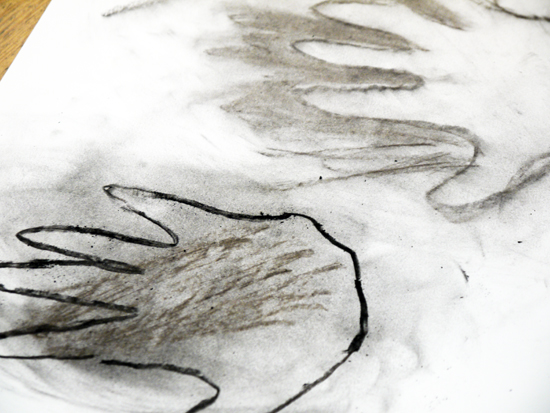
Remind children of the beginnings of drawing with “Talking Points: Cave Art“, and inspire simple mark making, through the medium of charcoal and handprint art.
Be inspired by historic and contemporary images of cave art. Use the “Drawing Like a Caveman” resource to encourage children to explore how they can use charcoal and hands to explore mark making further.
- Week 4 & 5: Find your Focus
Choose a Project
Choose one of the projects below, depending on how you want to link to other curriculum areas, experience, space and preferred approach.
- Option 1
Charcoal & Drama
Explore how students can use charcoal to explore narrative and creating a sense of drama. Remind them of ‘chiaroscuro’ to deepen their exploration.
Explore the following resources. You may choose to follow one resource, or combine more than one:

“Drawing by Torchlight” resource…
and/or

“Set Design with Primary Aged Children” resource…
and/or
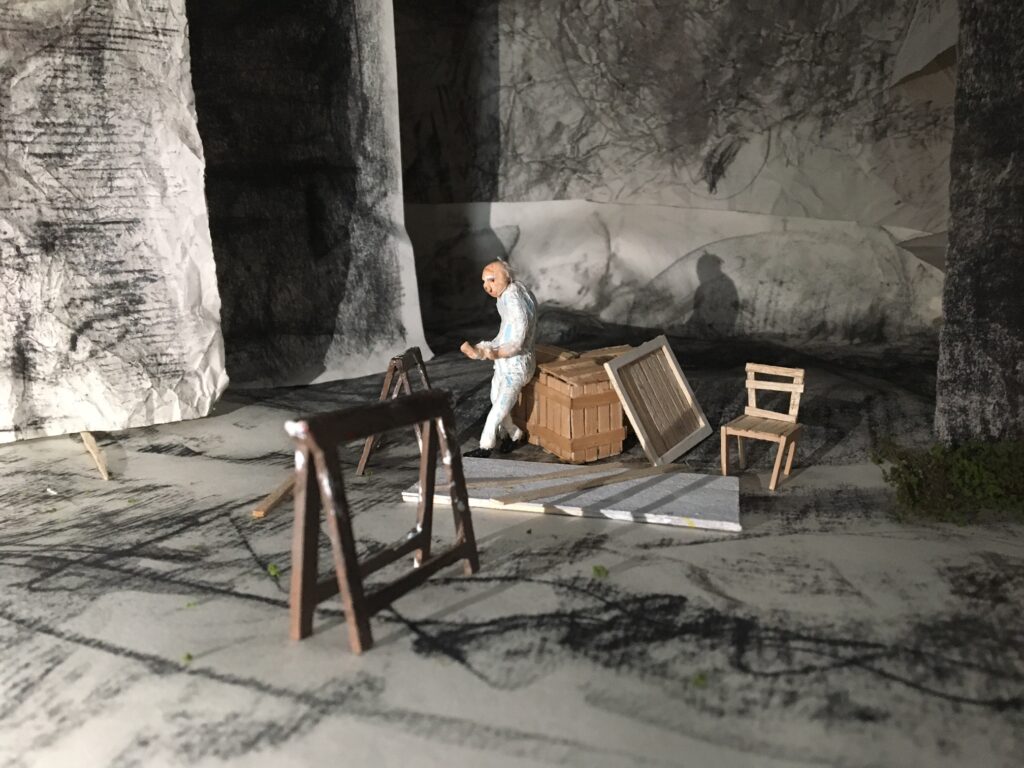
“Charcoal Cave” resource.
-
Or…
- Option 2
Charcoal & Dance
Pupils will explore how they can use charcoal and gestural movements made by the body to explore charcoal, dance and performance.

Introduce the work of Heather Hansen using the free to access “Talking Points: Heather Hansen” resource.

Follow with the free to access “Talking Points: Dancing with Charcoal” resource.
If you feel the children need a warm-up, find out how dance can be used as a response to art with the “Talking Points: Dancing to Art“
Consider how you can enable the children to respond creatively in the space you have.
You may want to run the project in the hall or large space, using cheap wallpaper lining paper taped together as your drawing surface.
If you don’t have space for the above, notice how in the last video on the Heather Hansen resource, the schools work on smaller sheets of paper in pairs or groups using hands and arms rather than whole body.
Whichever you choose, think about using digital media to record the event, or performing to an audience. Think about recording sound and using light to make it a multimedia performance.
- Week 6: Present and Review
Share, Reflect & Celebrate

Children can make a “Backwards Sketchbook” using the drawings made on loose sheets of paper.
Invite children to present all work in a clear space and take the opportunity to visit the work made like a mini gallery. Use the “Crits in the Classroom” resource.

